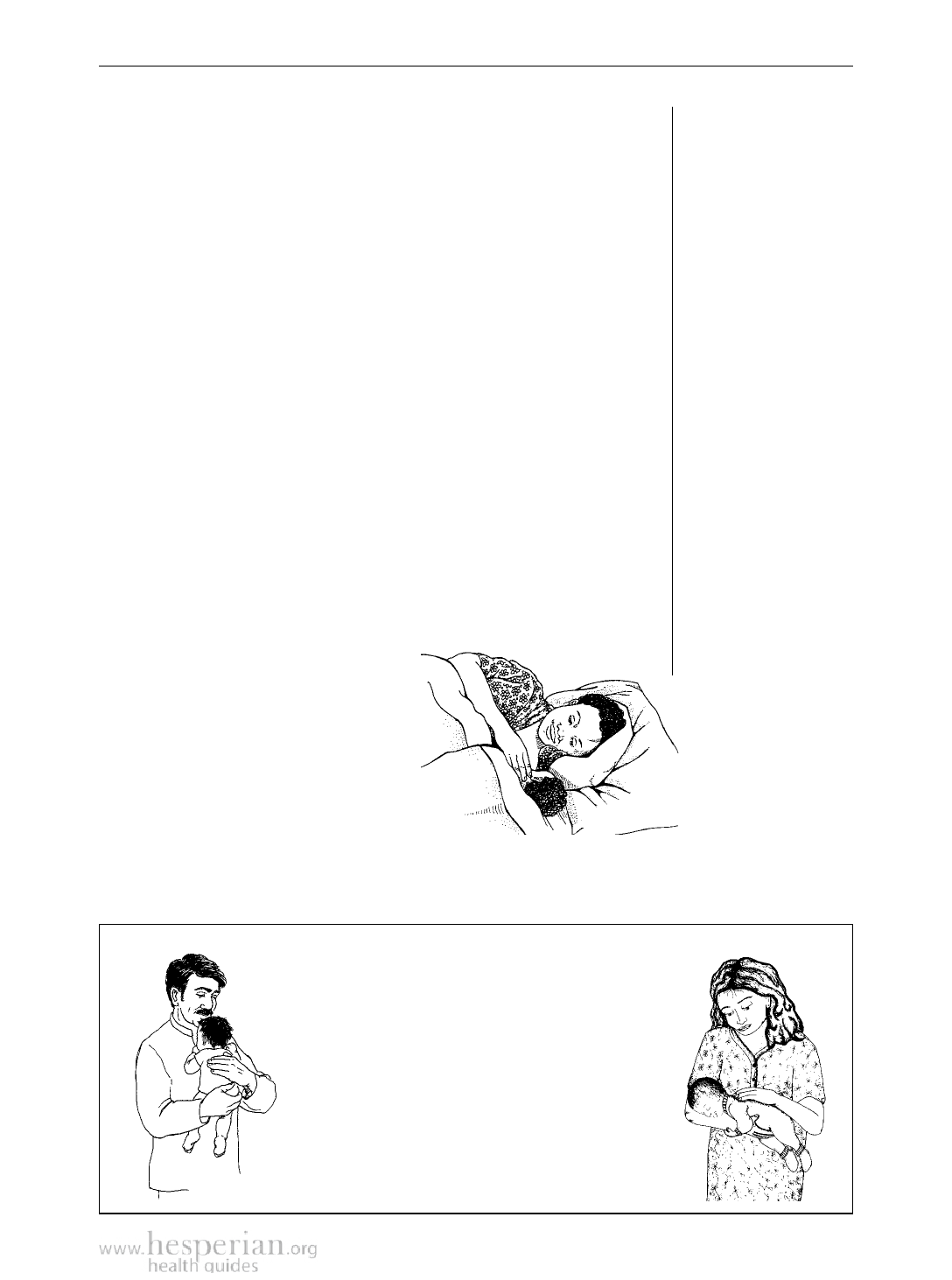
How to Breastfeed 107
For the new baby
After birth, a mother should breastfeed during the first hour.
It will help her womb stop bleeding and return to normal. Skin-
to-skin contact between mother and baby, and the baby’s suckling,
will help her milk to start flowing.
Newborn babies need the first yellow-colored breast milk
(colostrum) that comes out of the breasts for the first 2 or 3 days
after birth. Colostrum has all the nutrition that a new baby needs,
and it protects against disease. Colostrum also cleans the baby’s
gut. There is no need to give herbs, teas, or water to do this.
For any baby
Feed from both breasts, but let the baby finish one breast
first before offering the other. The whiter milk that comes after
the baby has been feeding for a few minutes is richer in fat than
the first milk. The baby needs this fat, so it is important to let the
baby finish one breast before offering the other. The baby will let
go when it is ready to stop or switch. If the baby takes only one
breast at a feeding, begin the next feed on the other breast.
Feed your baby whenever it is
hungry, day and night. Many new
babies will suckle about every 1 to 3
hours, especially in the first months.
Let the baby suckle as long and
as often as it wants. The more it
suckles, the more milk you
will make.
You do not need to give cereals, other
milk, or sugar water—even in hot climates.
These can make the baby take less breast
milk and may be harmful before 4 to 6 months.
How to
Breastfeed
➤ Babies want
to suckle when
they are hungry,
thirsty, fighting off
a sickness, growing
a lot, or need
comfort. If you are
not sure what your
baby wants, try
breastfeeding.
Mothers who
keep their babies
close by at night
can breastfeed
more easily. If she
sleeps with the
baby, the mother
can breastfeed and
sleep at the same
time.
Helping the baby burp (wind)
Sometimes when babies suckle
they swallow air, which can make them
uncomfortable. You can help a baby bring
this air up if you hold it on your shoulder
or chest and rub its back, or rub its back
while it sits or lies on your lap.
These positions will also help comfort
a restless baby or a baby that cries more
than usual.
Where Women Have No Doctor 2012